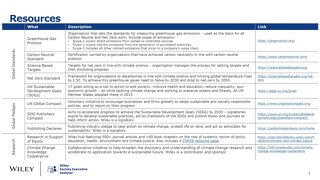how-to-delight-your-practitioner-members
March 11, 2020
Our annual Wiley Society Member Survey has helped us learn a lot about why researchers in academia join societies, but we wanted to know: do practitioners join and renew for the same reasons?
To get answers, we launched a new membership survey to help societies serve the specific needs of practitioners and other professionals in their discipline. The results show interesting crossover between practitioners and their academic colleagues, including what drives practitioners to join, why where they work makes a difference, and what they want from society membership. Here’s what we found:
1. Demographics
67% of our respondents are currently members of a society and 73% of those have been members for over 10 years. Although we received responses from 20 disciplines, most respondents were in veterinary medicine, engineering, or clinical medicine (including nursing and dentistry fields).
Questions about gender, experience, and place of work all showed interesting results. Looking at gender, 70% of the practitioners we surveyed are male, but the gender split changed a lot inside specific disciplines. For example, 44% of veterinarian respondents are women, as opposed to just 4% of engineers, so there’s definitely still an opportunity for societies in more male-dominated disciplines to make the society (and the discipline as a whole) more inclusive and diverse.
When it comes to place of work, over half of practitioner members reported that they work either in private practice (22%), for the government (18%), or in a private company (14%). Members with less experience in the professional world are more likely to work in government, so societies serving practitioner members need to balance the needs of older, more experienced members likely to be in private practice with the needs of younger professionals navigating work in the public sector.
2. Membership trends
30% of our respondents belong to more than one society, but multiple membership isn’t as common as it is among academics (where 41% are members of 3 or more societies). The group most likely to belong to more than one society is veterinarians, which may be because they need to join several societies in order to maintain the certification and training their field requires.
In good news for society publishers, publishing a journal appears to draw practitioners in, and members stay with a society for over two years longer on average if it publishes a journal (10.9 years as opposed to 8.7). Not all members stay, of course, around 10% don’t renew their membership every year. That’s similar to the percentage of academics who leave every year (11%), although, unlike academics, we didn’t uncover any clear pattern for why they choose to leave. However, given the high numbers of practitioners who work in the private sector, where staff turnover is more frequent than in academia, job changes that don’t require society membership may explain member turnover.
3. Drivers of membership
The biggest difference between practitioner members and academic members is in why they join: Belonging to a society because membership helps you meet your professional certification requirements is much more common among practitioners. In fact, 53% of the practitioner members we surveyed hold one or more certificates, rising to 80% for those in clinical medicine and 77% for vets. Similarly, regular professional training is a requirement for 44% of members overall, and for as much as 83% of vets.
Both vets and others in clinical medicine especially value free access to the society journal as a benefit of their membership. But just as for members in academia, attending the society conference and being part of the wider professional community are the two biggest drivers of membership.
For early-career members (ECMs), access to the journal is less of a reason to join than it is for long-term members and ECMs are generally less positive about society membership than their more experienced colleagues. Luckily, we also found that there are things societies can do to improve ECM perception of membership, such as facilitating more collaboration between practitioners and academics and actively promoting research authors as “thought leaders”. ECMs would like societies to formally recognize researchers for their work more often and encourage them to make their work more understandable for a non-academic audience.
Early career members also value practical career-focused help from their society, such as CV or resume building, and don’t care as much about more general member-focused activities.
What’s next?
Overall, practitioners join societies and associations for many of the same reasons their academic peers join: to be part of a community, to get access to society content, and to get help with their career.
But societies for practitioners—particularly organizations with both practitioner and academic members—also need to be aware of the differences. Professional societies can advance the field by working to improve gender diversity, balancing the needs of older and younger practitioners, and finding ways to continue to engage members who might otherwise lapse as soon as they no longer need membership to maintain their certification.
We’ll share more results from our practitioner member survey soon, but in the meantime, tell us about your field—do these results match your society’s experience serving practitioner members?










